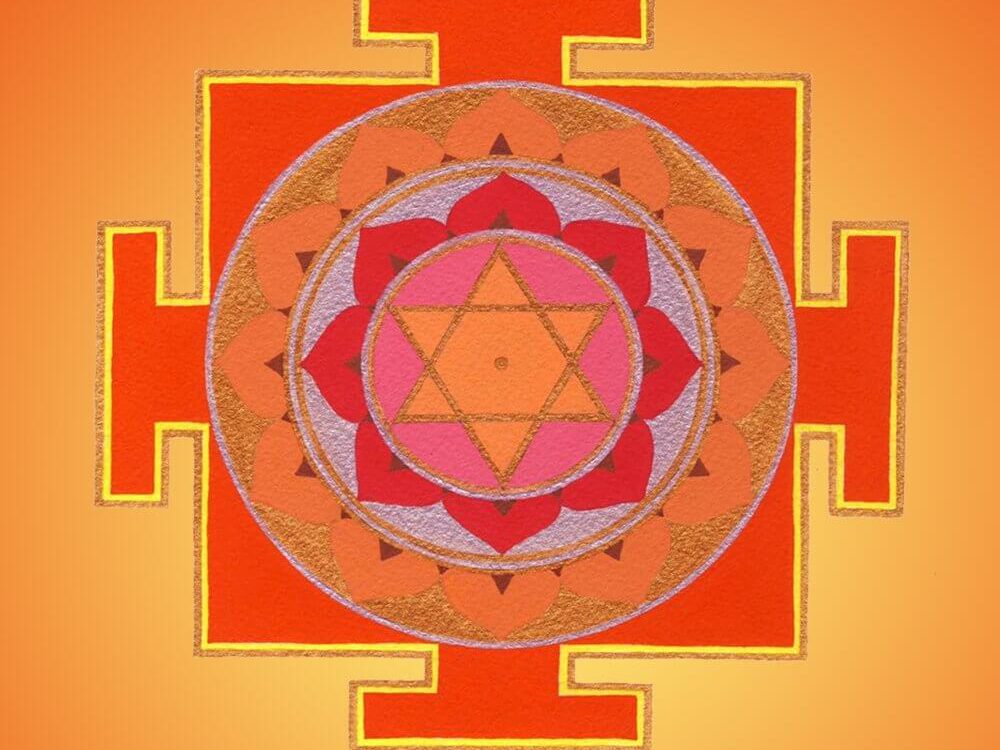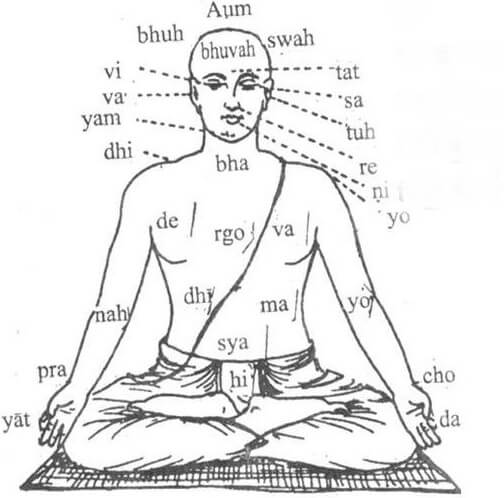
Mantra meaning
Mantra meaning or the meaning of a mantra can be found in many different cultures and spiritual practices. A mantra is essentially a sequence of sounds or words that is repeated to achieve a specific effect. It is often used as a tool to calm the mind, find inner peace and promote spiritual experiences. Here you can also find a detailed article on the Gayatri Mantra.
There are countless meanings of mantras used in different traditions. Some of the most well-known mantras are the “Om” mantra, which is widely used in Hinduism and Buddhism, and the “Om Mani Padme Hum” mantra, which is used in Tibetan Buddhism. Each mantra has its own meaning and intended effect.
Structure of a mantra
A mantra can consist of a single word, a phrase or even an entire passage. It can be chanted or recited in Sanskrit, Tibetan, English or any other language. The repetition of the mantra can be either loud or soft, depending on personal preference and the specific tradition one follows.
OM NAMAH SHIVAYA
The mantra “Om Namah Shivaya” is one of the best known and most frequently repeated mantras in Hinduism. It has a deep spiritual meaning and is recited by believers all over the world. The meaning of the mantra “Om Namah Shivaya” lies in its composition of various sacred syllables.
- The word “Om” represents the universal consciousness and the origin of life.
- “Namah” means “I bow down to” and symbolizes devotion and respect.
- “Shivaya” refers to Lord Shiva, one of the most important Hindu gods, who stands for transformation and spiritual realization. By reciting this mantra, we honor the divine within us and around us.
The meaning of “Om Namah Shivaya” goes beyond personal benefit. It is a mantra that reminds us that we are all part of a greater whole. It reminds us of our connection to the universal energy and encourages us to bring compassion, love and harmony into the world. By reciting this mantra, we can infuse our positive energy into our relationships, our daily lives and our community.
Effect of a mantra
These syllables therefore work on a physical, mental and spiritual level. Mantras in Sanskrit therefore have the particularity of functioning on a content level and as sound. The tones of this sound also have an effect on our mind, which in turn enables deep meditation. Through the constant repetition of the mantra, the mind is focused on a single vibration or idea. This can lead to a state of meditation in which the mind is calm and focused. Regular recitation can also help to harmonize our chakras. Every time we repeat this mantra, we send positive vibrations into our body and energy field. This not only promotes our physical and emotional health, but also strengthens our spiritual connection. This is why mantras are repeated very often in practice.

Uses of mantras
Mantras are often used in ceremonies, rituals or personal practices. They can be recited in a group or alone. Some people also use mantra meditation, where they concentrate on the mantra and allow it to enter their mind to achieve a state of deep contemplation and spiritual experience.
Mantra as a tool in tantra
In Tantra Yoga, mantras are also transmitted from teacher to student and thus follow an energetic tradition. Here we try to promote our spiritual development with the technology of the mantra, as a mantra in Hinduism is associated with a deity. By aligning ourselves with a divine characteristic of nature in the form of a deity, we transform our energy from the gross to the subtle.